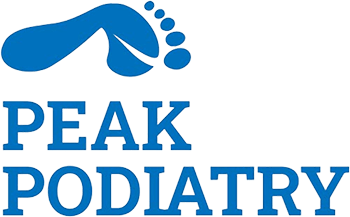
Flat Feet in Children: Early Signs and Intervention Strategies
Today, we’re focusing on a common concern among parents: flat feet in children. While many kids have flat feet during their early years, understanding the signs and knowing when to seek intervention can be crucial for their long-term foot health. Let’s explore what flat feet are, how to identify them, and the best strategies for intervention.
What Are Flat Feet?
Flat feet, or fallen arches, occur when the arch of the foot does not develop properly, causing the entire foot to make contact with the ground. This condition is quite common in young children, as their arches often haven’t fully formed yet. In many cases, children grow out of flat feet as they develop. However, in some instances, flat feet can persist and lead to discomfort or other issues.
Early Signs of Flat Feet
As a parent, being vigilant about your child’s foot development is essential. Here are some early signs to watch for:
Foot Appearance: Observe your child’s feet while they’re standing or walking. If the entire sole of their foot touches the ground, they may have flat feet. You might notice a lack of a visible arch, especially when they are barefoot.
Foot Pain: Although many children with flat feet don’t experience pain, some may complain of discomfort in the feet, ankles, or legs, especially after physical activities. Pay attention to any signs of pain or fatigue during play.
Difficulty with Activities: If your child struggles with running, jumping, or participating in sports, flat feet might be a contributing factor. Look for signs of hesitance or avoidance of physical activities they once enjoyed.
Uneven Shoe Wear: Check your child’s shoes for uneven wear patterns. If one side of the shoe shows significantly more wear than the other, it could indicate an alignment issue related to flat feet.
When to Seek Professional Help
If you notice any of these signs, it’s a good idea to consult a podiatrist. While many children will grow out of flat feet without any intervention, some may require treatment if flat feet lead to pain or mobility issues. A podiatrist can perform a thorough assessment and determine the best course of action.
Intervention Strategies
If your child is diagnosed with flat feet and shows signs of discomfort, there are several effective intervention strategies to consider:
Custom Orthotics: Custom orthotics are specially designed shoe inserts that provide support and help maintain proper foot alignment. They can be particularly beneficial for children with flat feet, helping to distribute pressure evenly and alleviate discomfort.
Footwear Selection: Choosing the right shoes is crucial. Look for shoes with good arch support, cushioning, and a wide toe box. Avoid overly flexible or unsupportive footwear, as these can exacerbate flat feet issues.
Foot Exercises: Incorporating specific exercises into your child’s routine can strengthen their foot muscles and improve arch development. Simple exercises like toe curls, heel raises, and arch lifts can make a significant difference.
Physical Therapy: In some cases, working with a physical therapist can be beneficial. They can design a personalised exercise program to improve strength, flexibility, and overall foot function.
Regular Monitoring: Keep an eye on your child's foot development over time. Regular check-ups with a podiatrist can help ensure that any changes are monitored and addressed promptly.
Conclusion
Flat feet in children are common, but early detection and intervention can make a significant difference in their foot health and overall well-being. If you notice any signs of flat feet in your child, don’t hesitate to reach out to us at Peak Podiatry Clinic. Our team is dedicated to helping your child maintain healthy, happy feet.
Investing in your child’s foot health now can lead to a lifetime of comfort and mobility. We’re here to support you every step of the way!
Ask Robert And His Team
Fill in the form to request a Call From Our Team
Fill in the form to request a Call From Our Team
One of our team will call you for FREE and answer any questions or concerns you may have about your Foot Pain.
One of our team will call you for FREE and answer any questions or concerns you may have about your Foot Pain.
© Copyright 2022. Peak Podiatry All rights reserved.





